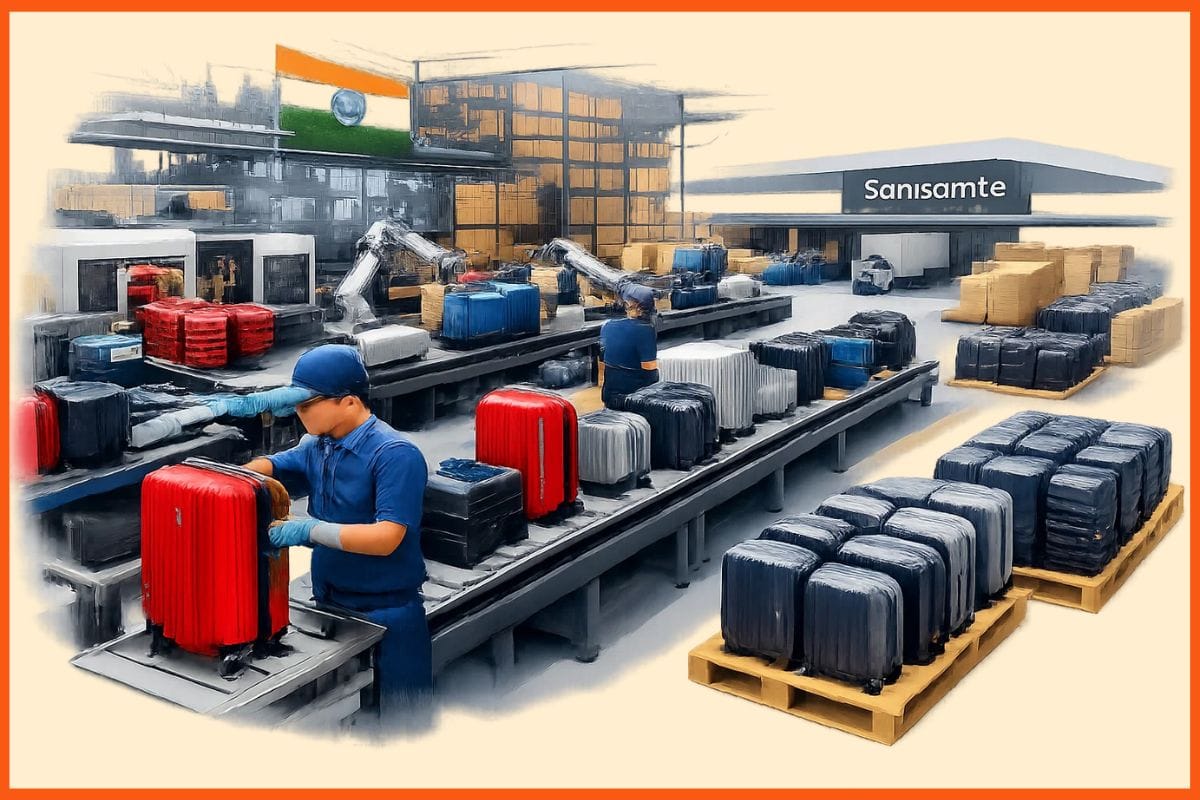Bridging Divides: Empowering Marginalized, Special Needs Students Via EdTech Initiatives
🔍Insights
The EdTech industry in India has experienced exponential growth in recent years, transforming the landscape of education and providing innovative solutions to learners across the country.
In 2020, India's educational technology sector, called EdTech, was valued at more than 2.8 billion U.S. dollars. By 2025, projections indicate that this valuation will skyrocket, surpassing the USD 10 billion mark.
However, amidst this progress, ensuring accessibility, affordability, and inclusivity for marginalized and special needs students remains a critical challenge.
Despite the widespread adoption of digital learning platforms, many students from underserved communities continue to face barriers to accessing quality education.
This article explores key strategies and initiatives aimed at enhancing accessibility and inclusivity in the Education Technology sector, with a focus on addressing the needs of marginalized and special needs students in India.

Tailored Content and Platforms
Adaptation for Special Needs
Bridging the Digital Divide
Teacher Training and Support
Community Engagement and Awareness
Collaboration with NGOs and Specialized Organizations
Policy Advocacy and Implementation
Tailored Content and Platforms
One of the fundamental strategies for promoting inclusivity in EdTech is developing educational content and platforms catering to diverse learning needs and abilities.
According to the "Prevalence, pattern, and determinants of disabilities in India: Insights from the National Family Health Survey-5 (2019–21)," published in February of this year, four out of every hundred individuals in India have a disability, highlighting the importance of creating accessible digital learning resources.
By 2050, India is projected to have 323 million individuals aged 60 years and above, constituting 19.1% of the total population.
This demographic shift will pose considerable structural and budgetary challenges for the country, exacerbated by the growing numbers of both elderly citizens and individuals with disabilities.
By providing options for different formats such as text, audio, and video, EdTech companies can accommodate varied learning preferences and ensure that content is accessible to all students.
“For students with disabilities, EdTech removes barriers to participation. Features like screen readers and voice-activated interfaces ensure equal access to educational materials. Imagine a student with visual impairments navigating complex diagrams – with screen readers, they can grasp the information independently. AI-powered platforms further personalize the learning experience, adjusting difficulty and content to individual needs,” Suraasa Founder and Cognitive Scientist Rishabh Khana told StartupTalky. Surassa is a teacher upskilling edtech platform.
Moreover, recent studies have shown that students are more engaged and retain information better when presented with content that aligns with their learning styles.
Adaptation for Special Needs
In addition to tailoring content, integrating assistive technologies is essential for supporting students with special needs.

Recent advancements in technology, such as screen readers, voice recognition software, and captioning tools, have significantly improved accessibility for individuals with visual or auditory impairments. However, there is still a need for greater awareness and implementation of these technologies within the EdTech sector.
“We need to move beyond a one-size-fits-all approach. EdTech solutions should incorporate diverse learning styles, including visual, auditory, and kinesthetic elements, to cater to individual needs. Integrating features like screen readers, closed captions, and dyslexia-friendly fonts ensures students with disabilities can access and engage with the learning materials effectively,” Rohan Rai, Co-Founder of Edupull told StartupTalky.
EduPull is an edtech company focussing on the needs of Gen Z. It acts as a bridge between institutions and Gen Z.
Only a small percentage of EdTech platforms in India are fully accessible to students with disabilities, highlighting the need for increased efforts to prioritize inclusivity in product development and design.
“In ensuring that Cherrilearn's EdTech solutions are accessible and inclusive for all learners, we address four core challenges that hinder accessibility and inclusivity. These challenges include unaffordability, limited reach in Tier 3 and Tier 4 regions, insufficient focus on learning outcomes, and the unavailability of EdTech in regional languages,“ Cherrilearn CEO and Co-founder Shrinidhi RS told StartupTalky.
Cherrilearn provides affordable, quality education in English and regional languages to rural areas through interactive learning aids.
Bridging the Digital Divide
Recent data suggests that approximately 50% of India's rural population lacks access to the internet, hindering their ability to benefit from online learning opportunities.
Addressing the digital divide is another critical aspect of promoting inclusivity in EdTech.
As per a survey on ‘Rural Internet Connectivity in India’, internet penetration in India faces several challenges, including unreliable electricity supply, affordability of internet connectivity and user equipment, lack of industry incentives for low-cost connectivity, and topographical challenges, among others.
To bridge this gap, EdTech companies must collaborate with government initiatives and NGOs to provide affordable or subsidized devices and internet connectivity to students in rural and underserved areas.
“EdTech providers, non-profit organizations, and government initiatives are working towards providing affordable or free access to necessary devices and internet connectivity. This ensures that learners from economically disadvantaged backgrounds can also benefit from digital education,” Inflection Point Ventures Co-founder Mitesh Shah told StartupTalky.
IPV is democratizing angel investing. It aims to be the most accessible angel-investing network providing funding and support to enable them to scale and grow.
With the Indian education technology market projected to be USD 10.4 billion by 2025, IPV has recently invested in the innovative education technology startup MyCaptain.
Teacher Training and Support
In addition to providing accessible content and technology, it is essential to invest in teacher training and support to ensure the effective implementation of EdTech solutions in the classroom.
Surveys have revealed that many teachers in India lack the necessary digital literacy skills to integrate technology into their teaching practices.
As per the World Economic Forum, by 2025, more than half of the global workforce will need upskilling, and reskilling that includes digital literacy skills.
To address this gap, EdTech companies can offer comprehensive training programs and ongoing support to educators, empowering them to leverage digital tools effectively to enhance student learning.
“Effective EdTech integration hinges on empowered teachers. The second strategy is teacher-focused EdTechs providing comprehensive training programs. This fosters improved technology adoption and equips teachers with skills to personalize learning,” said Suraasa’s Founder Rishabh Khanna.
His company is aimed at enabling and upskilling teachers as per international standards.
5 things to know about International Teaching Jobs
Recent initiatives by leading EdTech platforms have shown promising results, with trained teachers reporting increased confidence and engagement in using technology in their classrooms.
“Digital literacy gaps among educators and students represent another challenge. To overcome this, there is a need for substantial investments in training programs that enhance the digital literacy skills of both teachers and students,” angel investor Mitesh Shah said.
Shah has made 52 investments, including in BharatPe and GetVantage. He has invested in EdTech firms– -Suraasa, Geekster, Toppersnotes, Playto, Homi Lab, and Mindler, among others.
Community Engagement and Awareness
Raising awareness among parents, caregivers, and communities is also crucial for promoting inclusivity in EdTech. Recent studies have shown that parental involvement plays a significant role in supporting children's learning outcomes, particularly for students with special needs.
By actively engaging with parents and caregivers and providing guidance on how to support their children's digital learning journey, EdTech companies can create a more supportive and inclusive learning environment.
Moreover, recent collaborations between EdTech platforms and community organizations have helped increase awareness of available resources and services, empowering families to make informed decisions about their children's education.

Collaboration with NGOs and Specialized Organizations
Collaborating with NGOs and organizations specializing in education for marginalized and special needs students is another effective way to promote inclusivity in EdTech.
Recent partnerships between EdTech companies and non-profit organizations have resulted in the development of tailored educational content and programs designed to meet the unique needs of these student populations. By leveraging the expertise and resources of these organizations, EdTech platforms can ensure that their products and services are inclusive and accessible to all learners.
“It's essential to engage with all stakeholders, including educators, parents, policymakers, and the broader community, to build trust, demonstrate value, and foster collaboration. By emphasizing the transformative potential of EdTech and highlighting success stories, we can garner support and drive widespread adoption for the betterment of education for all,” said Cherrilearn’s Shrinidhi.
Shrinidhi's educational application, CherriLearn, delivers interactive lessons designed in regional languages, designed specifically for rural students in grades 1 to 5.
Policy Advocacy and Implementation
By working collaboratively with government agencies and policymakers, EdTech companies can help shape policies that support the development and implementation of inclusive education initiatives. Recent examples of policy reforms include mandates for web accessibility standards and guidelines for content development, which have helped improve the accessibility of digital learning resources for students with disabilities.
The Centre’s Samagra Shiksha Abhiyan program ensures the availability of assistive devices and technologies to aid students with disabilities in their learning process. These assistive devices include braille books, audio-visual aids, magnifiers, hearing aids, and mobility aids, among others.
Another initiative is the ‘AICTE-Saksham Scholarship Scheme 2023-24’, aimed at rewarding select differently-abled candidates with an annual financial award of ₹50,000 for each year of their technical study.
Conclusion
In conclusion, promoting accessibility and inclusivity in the EdTech industry is essential for ensuring equitable access to quality education for all students, including those from marginalized and special needs communities in India.
By implementing targeted strategies and initiatives, EdTech companies can play a significant role in driving positive change and fostering a more inclusive learning environment.
“Bridging the digital divide requires collaborative efforts to ensure equitable access to technology and infrastructure, especially in underserved communities,” EduPull’s Co-founder Rai said.
Through continued collaboration and innovation, we can empower every learner to reach their full potential and build a brighter future for generations to come.

Must have tools for startups - Recommended by StartupTalky
- Convert Visitors into Leads- SeizeLead
- Website Builder SquareSpace
- Manage your business Smoothly Google Business Suite







